
Teodorico Pedrini
Encyclopedia
Teodorico Pedrini was an Italian
priest
, missionary
, musician
and composer
.
Pedrini was born in Fermo
, Italy
. He was the founder of the Xizhimen Church
(西堂) in Beijing. He was teacher of music of some Emperor Kangxi’s sons and co-author of the first treatise on Western Music theory ever written in Chinese: the LülüZhengyi-Xubian, later included in the Siku Quanshu
.
His Chinese name was 德理格 - De Lige (Te Li-ko).

His father, Giovanni Francesco Pedrini, who was born in Servigliano
on February 5, 1630, had been working as notary in his native town for two years since 1656, before going to Rome
for ten years, as Chancellor for the Auditor Camerae. He then became the most important notary in Fermo, from 1669 to his death in 1707.
Teodorico’s mother was Nicolosa Piccioni, born in Fermo on March 14, 1650, daughter of another notary, Giovanni Francesco Piccioni, from Altidona
.
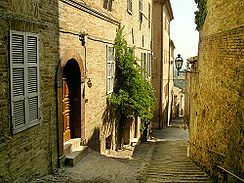 Teodorico got his clerical Tonsure
Teodorico got his clerical Tonsure
in 1687, and the minor orders
in Fermo in 1690. He attended the University in Fermo, graduating in Utroque Iure on June 26, 1692. From November 16, 1692 to August 7, 1697 he lived in the Collegio Piceno
in Rome. In this period he joined the Academy of Arcadia
in 1696, where he got the name of Dioro Taumasio.
On December 21, 1697 he got the Sub-diaconate; on February 23, 1698 he joined the Congregation of the Mission of Saint Vincent de Paul (Vincentian or Lazarists), in March 1698 he became Diacono and two weeks later – on the Easter night of 1698 - presbyter
, in the Basilica of St. John Lateran
in Rome. In June 1698 he entered the Lazarist house of Santi Giovanni e Paolo
in Rome, where he remained until January 1702, when he was sent to China, as missionary of Propaganda Fide, after meeting the Pope Clement XI
, Giovanni Francesco Albani from Urbino.
to Livorno
, then by ship to Toulon
, and Paris
, where the Nuncio was Filippo Antonio Gualterio
, also born in Fermo.
Although selected as a member of the first papal Legation of Patriarch Carlo Tommaso Maillard de Tournon
, who had already left from Spain to Canary Islands, Pedrini never managed to join him, and after one and a half year he left from Saint Malo with other missionaries, on December 26, 1703, on a French ship towards South America; the ship landed in Peru
in July 1704, and stayed there for more than one year. In 1705 he arrived in Mexico
and not earlier than 1707 he managed to leave from Acapulco
, on a Manila galleon
. After reaching the Mariana Islands
, he arrived in the Philippines
, where he stayed for almost two years. There he met in Mariveles
five western missionaries of Propaganda Fide, among whom Matteo Ripa
(who later founded the Chinese College in Neaples, now Università degli studi di Napoli L'Orientale), and they reached Macau on January 10. Here they met Cardinal Tournon, who recommended Pedrini as a musician at court, in answer to a request from Kangxi himself. After assisting him on his death-bed on June 8, 1710, they set off for Beijing, where they finally arrived on February 6, 1711.
To the end of his life Pedrini reconciled himself with the Jesuit missionaries
, without denying his faithfullness to the Holy See
, which had brought him so many problems in the years tenties and twenties.
Teodorico Pedrini died in the night of December 10, 1746, in his house of Xitang at Beijing
, China
, without ever coming back to Italy, and was buried in the cemetery of Propaganda Fide, with the money of Emperor Qianlong.
His gravestone, visible till the first part of last century in the wall of the All Saints Church, does not exist anymore.
His importance in the first half of 18th century is connected with two main fields:
The so-called Chinese rites Controversy concerned the way in which the Christian religious practice was to be considered, especially in connection to the Chinese practice of Confucian origin, which the Jesuits, following Matteo Ricci’s teaching, were willing to permit to the converted Christians.
Pedrini was one of the few missionaries who kept to the directives of the Holy See in that regard, which had repeatedly forbidden (first with the Decree Cum Deus Optimus in 1704, then with the Bullas Ex Illa Die in 1715, and Ex Quo Singulari in 1742) the mixture of Christian and Confucian practices. His fidelity to the decisions of Rome brought to Pedrini beatings and imprisonment. In the most delicate period of the controversy, Pedrini was the main representative of Propaganda Fide in Beijing; in such a position he held regular epistolary contacts with the Vatican.
As missionary to the Chinese court, Pedrini carried out also another important project: in 1723 he bought a large residence where he opened to the cult the first non-Jesuit Church in Beijing: the Church of Xitang, the Western Church. The church was destroyed twice after his death and it was twice re-built. It is still standing nowadays and, after a recent restoration, it has been opened again exactly in the same place where Pedrini built it: at n° 130 of Xizhimennei Dajie
, one of the largest avenue of the Chinese capital city, on the way between the Forbidden City
and the Old Summer Palace
, in those times the Emperor’s residence.
Still readable on one of the sidewalls in the Church, an inscription reminds the visitors of the name of its founder.
In addition, carrying on with the work of his predecessor the Portuguese Jesuit Tomas Pereira
, he completed the text of the first treatise on Western Music Theory ever published in China, the LülüZhengyi-Xubian, which was later included in the huge encyclopedical work called Siku Quanshu
(1781).
With this work Pedrini asserted himself as one of the main figures in the introduction of the western music in China.
Furthermore, Teodorico Pedrini is the author of the only Western Baroque music
compositions known in China in the 18th century: the Dodici Sonate a Violino Solo col Basso del Nepridi – Opera Terza whose original manuscript is still preserved in the National Library of Beijing.
; these scores were recorded in 1996 by the French group XVIII-21 Musique des Lumières directed by Jean-Christophe Frisch, with the title Concert Baroque à la Cité Interdite .
Italy
Italy , officially the Italian Republic languages]] under the European Charter for Regional or Minority Languages. In each of these, Italy's official name is as follows:;;;;;;;;), is a unitary parliamentary republic in South-Central Europe. To the north it borders France, Switzerland, Austria and...
priest
Priest
A priest is a person authorized to perform the sacred rites of a religion, especially as a mediatory agent between humans and deities. They also have the authority or power to administer religious rites; in particular, rites of sacrifice to, and propitiation of, a deity or deities...
, missionary
Missionary
A missionary is a member of a religious group sent into an area to do evangelism or ministries of service, such as education, literacy, social justice, health care and economic development. The word "mission" originates from 1598 when the Jesuits sent members abroad, derived from the Latin...
, musician
Musician
A musician is an artist who plays a musical instrument. It may or may not be the person's profession. Musicians can be classified by their roles in performing music and writing music.Also....* A person who makes music a profession....
and composer
Composer
A composer is a person who creates music, either by musical notation or oral tradition, for interpretation and performance, or through direct manipulation of sonic material through electronic media...
.
Pedrini was born in Fermo
Fermo
Fermo is a town and comune of the Marche, Italy, in the Province of Fermo.Fermo is located on a hill, the Sabulo with a fine view, on a branch from Porto San Giorgio on the Adriatic coast railway....
, Italy
Italy
Italy , officially the Italian Republic languages]] under the European Charter for Regional or Minority Languages. In each of these, Italy's official name is as follows:;;;;;;;;), is a unitary parliamentary republic in South-Central Europe. To the north it borders France, Switzerland, Austria and...
. He was the founder of the Xizhimen Church
Xizhimen Church
The Xizhimen Church , or Our Lady of Mount Carmel Catholic Church is a Roman Catholic Church located on the southern side at n.130 of Xizhimen Neidajie in Beijing. It is commonly referred to as Xitang to the locals.The Xizhimen Church was the last among the four historic Catholic churches in...
(西堂) in Beijing. He was teacher of music of some Emperor Kangxi’s sons and co-author of the first treatise on Western Music theory ever written in Chinese: the LülüZhengyi-Xubian, later included in the Siku Quanshu
Siku Quanshu
The Siku Quanshu, variously translated as the Imperial Collection of Four, Emperor's Four Treasuries, Complete Library in Four Branches of Literature, or Complete Library of the Four Treasuries, is the largest collection of books in Chinese history and probably the most ambitious editorial...
.
His Chinese name was 德理格 - De Lige (Te Li-ko).

Biography
Teodorico Pedrini was baptized on July 6, 1671, in the church of St. Michael Archangel, in Fermo, under the name Paulus Philippus Theodoricus.His father, Giovanni Francesco Pedrini, who was born in Servigliano
Servigliano
Servigliano is a comune in the Province of Fermo in the Italian region Marche, located about 60 km south of Ancona and about 25 km north of Ascoli Piceno...
on February 5, 1630, had been working as notary in his native town for two years since 1656, before going to Rome
Rome
Rome is the capital of Italy and the country's largest and most populated city and comune, with over 2.7 million residents in . The city is located in the central-western portion of the Italian Peninsula, on the Tiber River within the Lazio region of Italy.Rome's history spans two and a half...
for ten years, as Chancellor for the Auditor Camerae. He then became the most important notary in Fermo, from 1669 to his death in 1707.
Teodorico’s mother was Nicolosa Piccioni, born in Fermo on March 14, 1650, daughter of another notary, Giovanni Francesco Piccioni, from Altidona
Altidona
Altidona is a comune in the Province of Fermo in the Italian region Marche, located about 60 km southeast of Ancona and about 35 km northeast of Ascoli Piceno.-Main sights:*The walls*Medieval watchtower of Belvedere...
.

Tonsure
Tonsure is the traditional practice of Christian churches of cutting or shaving the hair from the scalp of clerics, monastics, and, in the Eastern Orthodox Church, all baptized members...
in 1687, and the minor orders
Minor orders
The minor orders are the lowest ranks in the Christian clergy. The most recognized minor orders are porter, lector, exorcist, and acolyte. In the Latin rite Catholic Church, the minor orders were in most cases replaced by "instituted" ministries of lector and acolyte, though communities that use...
in Fermo in 1690. He attended the University in Fermo, graduating in Utroque Iure on June 26, 1692. From November 16, 1692 to August 7, 1697 he lived in the Collegio Piceno
San Salvatore in Lauro
San Salvatore in Lauro is a Catholic church in central Rome, Italy, located in the rione Ponte. It is the "national church" of the marchigiani, the inhabitants of the Marche region of Italy...
in Rome. In this period he joined the Academy of Arcadia
Academy of Arcadia
The Academy of Arcadia or Academy of Arcadians was an Italian literary academy founded in Rome in 1690.-History:...
in 1696, where he got the name of Dioro Taumasio.
On December 21, 1697 he got the Sub-diaconate; on February 23, 1698 he joined the Congregation of the Mission of Saint Vincent de Paul (Vincentian or Lazarists), in March 1698 he became Diacono and two weeks later – on the Easter night of 1698 - presbyter
Presbyter
Presbyter in the New Testament refers to a leader in local Christian congregations, then a synonym of episkopos...
, in the Basilica of St. John Lateran
Basilica of St. John Lateran
The Papal Archbasilica of St. John Lateran , commonly known as St. John Lateran's Archbasilica and St. John Lateran's Basilica, is the cathedral of the Diocese of Rome and the official ecclesiastical seat of the Bishop of Rome, who is the Pope...
in Rome. In June 1698 he entered the Lazarist house of Santi Giovanni e Paolo
Santi Giovanni e Paolo
There are a number of churches in Italy named after the martyrs St. John and St. Paul , not the apostles, but two soldiers martyred for their faith in the years 361-363...
in Rome, where he remained until January 1702, when he was sent to China, as missionary of Propaganda Fide, after meeting the Pope Clement XI
Pope Clement XI
Pope Clement XI , born Giovanni Francesco Albani, was Pope from 1700 until his death in 1721.-Early life:...
, Giovanni Francesco Albani from Urbino.
His journey to China
His journey was very long, first along the Via FrancigenaVia Francigena
The Via Francigena is an ancient road between Rome and Canterbury, passing through England, France, Switzerland and Italy. In mediaeval times it was an important road and pilgrimage route...
to Livorno
Livorno
Livorno , traditionally Leghorn , is a port city on the Tyrrhenian Sea on the western edge of Tuscany, Italy. It is the capital of the Province of Livorno, having a population of approximately 160,000 residents in 2009.- History :...
, then by ship to Toulon
Toulon
Toulon is a town in southern France and a large military harbor on the Mediterranean coast, with a major French naval base. Located in the Provence-Alpes-Côte-d'Azur region, Toulon is the capital of the Var department in the former province of Provence....
, and Paris
Paris
Paris is the capital and largest city in France, situated on the river Seine, in northern France, at the heart of the Île-de-France region...
, where the Nuncio was Filippo Antonio Gualterio
Filippo Antonio Gualterio (cardinal)
Filippo Antonio Gualterio was made a papal nuncio to France and cardinal of the Roman Catholic Church from 1706....
, also born in Fermo.
Although selected as a member of the first papal Legation of Patriarch Carlo Tommaso Maillard de Tournon
Charles-Thomas Maillard De Tournon
Charles-Thomas Maillard De Tournon was a papal legate and cardinal to the East Indies and China.-Biography:...
, who had already left from Spain to Canary Islands, Pedrini never managed to join him, and after one and a half year he left from Saint Malo with other missionaries, on December 26, 1703, on a French ship towards South America; the ship landed in Peru
Peru
Peru , officially the Republic of Peru , is a country in western South America. It is bordered on the north by Ecuador and Colombia, on the east by Brazil, on the southeast by Bolivia, on the south by Chile, and on the west by the Pacific Ocean....
in July 1704, and stayed there for more than one year. In 1705 he arrived in Mexico
Mexico
The United Mexican States , commonly known as Mexico , is a federal constitutional republic in North America. It is bordered on the north by the United States; on the south and west by the Pacific Ocean; on the southeast by Guatemala, Belize, and the Caribbean Sea; and on the east by the Gulf of...
and not earlier than 1707 he managed to leave from Acapulco
Acapulco
Acapulco is a city, municipality and major sea port in the state of Guerrero on the Pacific coast of Mexico, southwest from Mexico City. Acapulco is located on a deep, semi-circular bay and has been a port since the early colonial period of Mexico’s history...
, on a Manila galleon
Manila Galleon
The Manila galleons or Manila-Acapulco galleons were Spanish trading ships that sailed once or twice per year across the Pacific Ocean between Manila in the Philippines, and Acapulco, New Spain . The name changed reflecting the city that the ship was sailing from...
. After reaching the Mariana Islands
Mariana Islands
The Mariana Islands are an arc-shaped archipelago made up by the summits of 15 volcanic mountains in the north-western Pacific Ocean between the 12th and 21st parallels north and along the 145th meridian east...
, he arrived in the Philippines
Philippines
The Philippines , officially known as the Republic of the Philippines , is a country in Southeast Asia in the western Pacific Ocean. To its north across the Luzon Strait lies Taiwan. West across the South China Sea sits Vietnam...
, where he stayed for almost two years. There he met in Mariveles
Mariveles, Bataan
Mariveles is a 1st class municipality in the province of Bataan, Philippines. According to the latest census, it has a population of 102,844 people in 19,460 households...
five western missionaries of Propaganda Fide, among whom Matteo Ripa
Matteo Ripa
Matteo Ripa was an Italian priest who was sent as a missionary to China by Propaganda Fide, and between 1711 to 1723 worked as a painter and copper-engraver at the Manchu court of the well-known Kangxi Emperor....
(who later founded the Chinese College in Neaples, now Università degli studi di Napoli L'Orientale), and they reached Macau on January 10. Here they met Cardinal Tournon, who recommended Pedrini as a musician at court, in answer to a request from Kangxi himself. After assisting him on his death-bed on June 8, 1710, they set off for Beijing, where they finally arrived on February 6, 1711.
His life in Beijing
Being, with Matteo Ripa, the first non-jesuit missionary to settle at the Chinese court, one hundred years after Matteo Ricci's death, Teodorico Pedrini was the first missionary to speak with Kangxi about the Pope's decision over the Chinese Rites, sending back to Rome the Emperor's peaceful reactions on the matter. His relations to Rome found the negative reaction of the Jesuits, who were contraries to the Decrees. This difference of attitude was the long lasting characteristic of his missionary life, which brought him to the dramatic events of 1721 when, at the end of the second Legation of the Patriarch Carlo Ambrogio Mezzabarba, he refused to sign the final document called Mandarin’s Diary, and was imprisoned in the residence of the French Jesuits in Beijing until 1723. The Emperor Yongzheng got him free in February 1723 but the whole fact caused hard polemics in Rome in the following years until 1730, which anticipated the final condemnation of the Chinese Rites, with the papal Bull Ex Quo Singulari in 1742.His last years
In 1723 Pedrini bought the residence of Xitang, where he established the first Church of Propaganda Fide in Beijing.To the end of his life Pedrini reconciled himself with the Jesuit missionaries
Jesuit China missions
The history of the missions of the Jesuits in China is part of the history of relations between China and the Western world. The missionary efforts and other work of the Society of Jesus, or Jesuits, between the 16th and 17th century played a significant role in continuing the transmission of...
, without denying his faithfullness to the Holy See
Holy See
The Holy See is the episcopal jurisdiction of the Catholic Church in Rome, in which its Bishop is commonly known as the Pope. It is the preeminent episcopal see of the Catholic Church, forming the central government of the Church. As such, diplomatically, and in other spheres the Holy See acts and...
, which had brought him so many problems in the years tenties and twenties.
Teodorico Pedrini died in the night of December 10, 1746, in his house of Xitang at Beijing
Beijing
Beijing , also known as Peking , is the capital of the People's Republic of China and one of the most populous cities in the world, with a population of 19,612,368 as of 2010. The city is the country's political, cultural, and educational center, and home to the headquarters for most of China's...
, China
China
Chinese civilization may refer to:* China for more general discussion of the country.* Chinese culture* Greater China, the transnational community of ethnic Chinese.* History of China* Sinosphere, the area historically affected by Chinese culture...
, without ever coming back to Italy, and was buried in the cemetery of Propaganda Fide, with the money of Emperor Qianlong.
His gravestone, visible till the first part of last century in the wall of the All Saints Church, does not exist anymore.
The mission and the music
Teodorico Pedrini was a missionary in China from 1710 to 1746, the year of his death.His importance in the first half of 18th century is connected with two main fields:
The history of the Church
The doctrinal issues involving the Mission in China in the period between the end of XVII and the beginning of the 18th century saw Teodorico Pedrini as one of its main characters.The so-called Chinese rites Controversy concerned the way in which the Christian religious practice was to be considered, especially in connection to the Chinese practice of Confucian origin, which the Jesuits, following Matteo Ricci’s teaching, were willing to permit to the converted Christians.
Pedrini was one of the few missionaries who kept to the directives of the Holy See in that regard, which had repeatedly forbidden (first with the Decree Cum Deus Optimus in 1704, then with the Bullas Ex Illa Die in 1715, and Ex Quo Singulari in 1742) the mixture of Christian and Confucian practices. His fidelity to the decisions of Rome brought to Pedrini beatings and imprisonment. In the most delicate period of the controversy, Pedrini was the main representative of Propaganda Fide in Beijing; in such a position he held regular epistolary contacts with the Vatican.
As missionary to the Chinese court, Pedrini carried out also another important project: in 1723 he bought a large residence where he opened to the cult the first non-Jesuit Church in Beijing: the Church of Xitang, the Western Church. The church was destroyed twice after his death and it was twice re-built. It is still standing nowadays and, after a recent restoration, it has been opened again exactly in the same place where Pedrini built it: at n° 130 of Xizhimennei Dajie
Xizhimen
Xizhimen was formerly a gate in the Beijing city wall and is now the name of a transportation node in Beijing. The gate formerly was the entrance of drinking water for the Emperor, coming from the Jade Spring Hills to the west of Beijing...
, one of the largest avenue of the Chinese capital city, on the way between the Forbidden City
Forbidden City
The Forbidden City was the Chinese imperial palace from the Ming Dynasty to the end of the Qing Dynasty. It is located in the middle of Beijing, China, and now houses the Palace Museum...
and the Old Summer Palace
Old Summer Palace
The Old Summer Palace, known in China as Yuan Ming Yuan , and originally called the Imperial Gardens, was a complex of palaces and gardens in Beijing...
, in those times the Emperor’s residence.
Still readable on one of the sidewalls in the Church, an inscription reminds the visitors of the name of its founder.
The history of music and the cultural relations between East and West
Besides being a priest, Pedrini was also a musician. This competence helped him first to be admitted to the Court of the Chinese emperors then to gain the favour of three successive Emperors, ruling during his lifetime Kangxi (1662–1722), Yongzheng (1722–1735) and Qianlong (1735–1796). As musician, Pedrini was the teacher of three sons of the emperor Kangxi, constructed musical instruments and mended those present at court.In addition, carrying on with the work of his predecessor the Portuguese Jesuit Tomas Pereira
Thomas Pereira
Thomas Pereira or Tomás Pereira , also known as Tomé Pereira, was a Portuguese Jesuit and musician who worked as a missionary in Qing China....
, he completed the text of the first treatise on Western Music Theory ever published in China, the LülüZhengyi-Xubian, which was later included in the huge encyclopedical work called Siku Quanshu
Siku Quanshu
The Siku Quanshu, variously translated as the Imperial Collection of Four, Emperor's Four Treasuries, Complete Library in Four Branches of Literature, or Complete Library of the Four Treasuries, is the largest collection of books in Chinese history and probably the most ambitious editorial...
(1781).
With this work Pedrini asserted himself as one of the main figures in the introduction of the western music in China.
Furthermore, Teodorico Pedrini is the author of the only Western Baroque music
Baroque music
Baroque music describes a style of Western Classical music approximately extending from 1600 to 1760. This era follows the Renaissance and was followed in turn by the Classical era...
compositions known in China in the 18th century: the Dodici Sonate a Violino Solo col Basso del Nepridi – Opera Terza whose original manuscript is still preserved in the National Library of Beijing.
Gallery
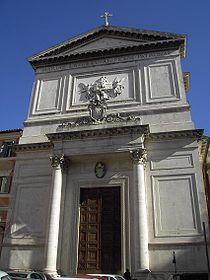 |
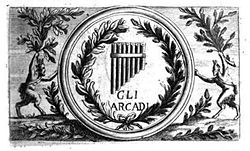 |
.jpg) |
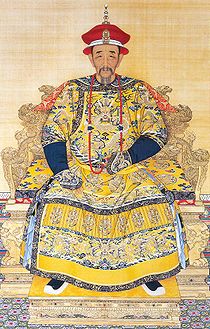 |
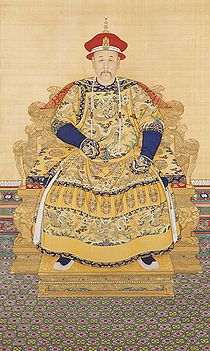 |
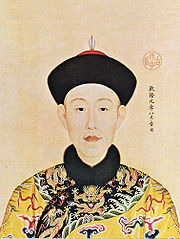 |
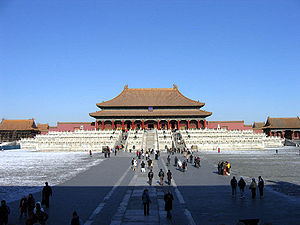 |
 |
 |
Works
Dodici Sonate a Violino Solo col Basso del Nepridi – Opera Terza, in National Library of ChinaNational Library of China
The National Library of China or NLC in Beijing is the largest library in Asia, and one of the largest in the world with a collection of over 23 million volumes...
; these scores were recorded in 1996 by the French group XVIII-21 Musique des Lumières directed by Jean-Christophe Frisch, with the title Concert Baroque à la Cité Interdite .
Essential bibliography
- ALLSOP P.C. - LINDORFF J., Teodorico Pedrini: The Music and Letters of an 18th-century Missionary in China, in Vincentian Heritage, 27:2 (2008)
- BAUDOUIN J., Le Mandarin blanc, Paris, 1999 - "Prix du Roman Historique 1999, Rendez-vous de l'histoire de Blois (France)"
- BRIZZI G. P. (edited by), L’Antica Università di Fermo, Fermo, 2001
- DI FIORE G., La Legazione Mezzabarba in Cina (1720-1721), Napoli, 1989
- DUVIGNEAU A.-B. CM, Teodorico Pedrini, Prete della missione, Musico alla corte imperiale di Pechino, Roma, 1946
- GALEFFI F. G. - TARSETTI G., Teodorico Pedrini e la Missione di Cina in La Voce delle Marche, supplement n. 1 January 13, 2006
- GALEFFI F. G. - TARSETTI G., Teodorico Pedrini nei Documenti degli archivi del’Archidiocesi di Fermo, in Quaderni dell’Archivio Storico Arcivescovile di Fermo, XXII, n. 44 (December 2007)
- GILD G., The Introduction of European Musical Theory during the Early Qing Dynasty. The achievements of Thomas Pereira and Theodorico Pedrini, in Monumenta Serica Monograph Series XXXV/2, Sankt Augustin, 1998
- GIMM M., Teodorico Pedrini, in Die Musik in Geschichte und Gegenwart, vol. 13, Kassel, 2005
- LINDORFF J., Teodorico Pedrini, in The New Grove Dictionary of Music and MusiciansGrove Dictionary of Music and MusiciansThe New Grove Dictionary of Music and Musicians is an encyclopedic dictionary of music and musicians. Along with the German-language Musik in Geschichte und Gegenwart, it is the largest single reference work on Western music. The dictionary has gone through several editions since the 19th century...
, London, 2001 - RIPA MATTEO, Giornale (1705–1724), edited by Michele Fatica, Napoli, 1991–1996
- SISTO ROSSO A. OFM, Apostolic Legations to China of the eighteenth century, P. D. and Ione Perkins, South Pasadena, 1948
- TASSI E., Teodorico Pedrini Missionario fermano alla corte imperiale cinese, in Quaderni dell’Archivio Storico Arcivescovile di Fermo, XX, n. 39 (June 2005)
- VIANI S., Istoria delle cose operate nella China da Monsignor Gio. Ambrogio Mezzabarba Patriarca d’Alessandria, Legato Appostolico in quell’Impero, e di presente Vescovo di Lodi, Parigi, 1739
- VON PASTOR L., History of the Popes, voll. XXXIII-XXXIV, St. Louis, 1941
See also
- Chinese rites
- Chinese Religions
- Chinese History
- Roman Catholicism in ChinaRoman Catholicism in ChinaRoman Catholicism in China has a long and complicated history...
External links
- http://www.teodoricopedrini.it (Centro Studi Teodorico Pedrini – Fermo)
- http://ricci.rt.usfca.edu/biography/view.aspx?biographyID=926 (University of San Francisco – Ricci Roundtable on the History of Christianity in China)
- http://www.cmroma.it/p_pedrini.html (Congregation of the Mission – Provincia Romana)
- http://www.cmroma.it/p_pedrini3.html (Il Messaggero – Cultura e Spettacoli, December 1, 2004: Fabio Isman, Un maestro per i figli del cielo)
- http://no.wikipedia.org/wiki/Xitang-kirken_i_Beijing

